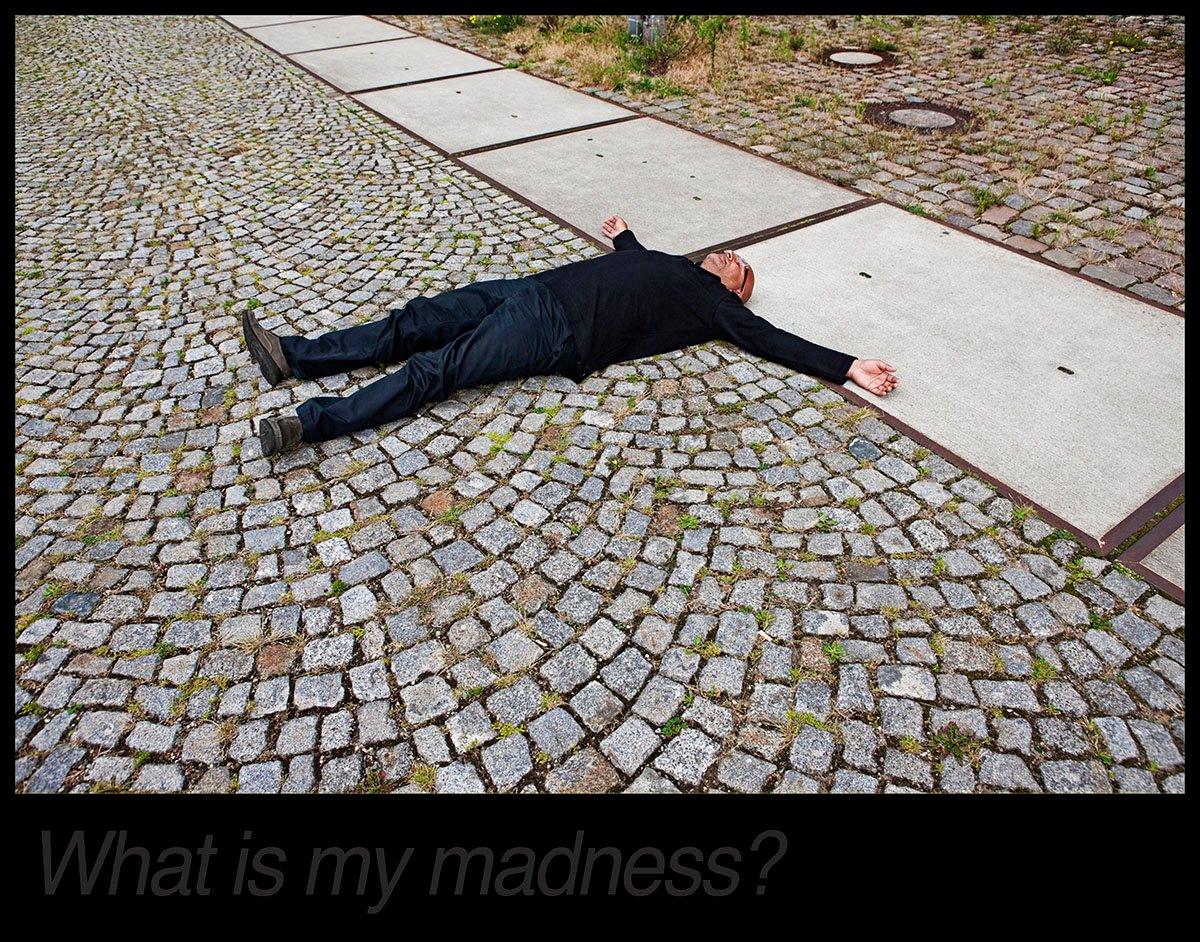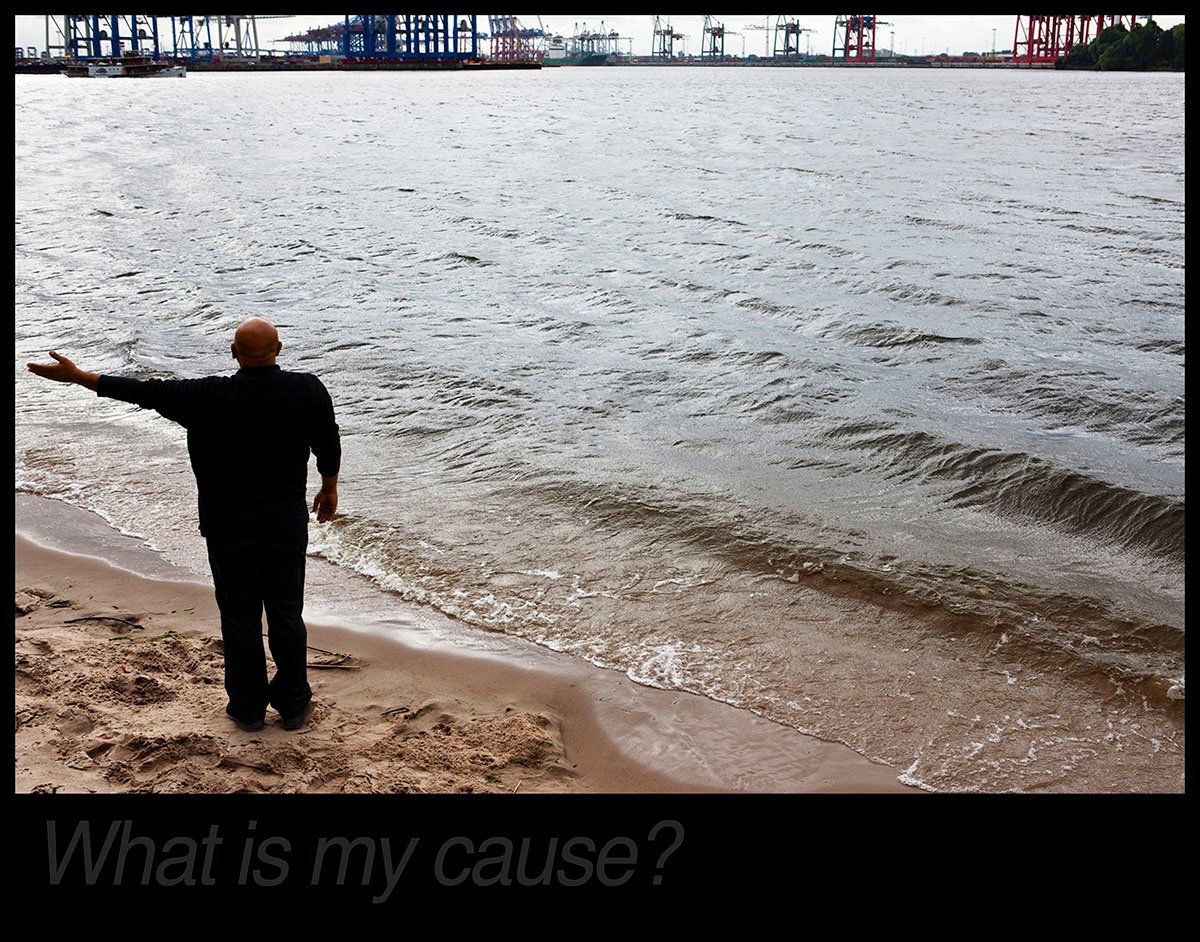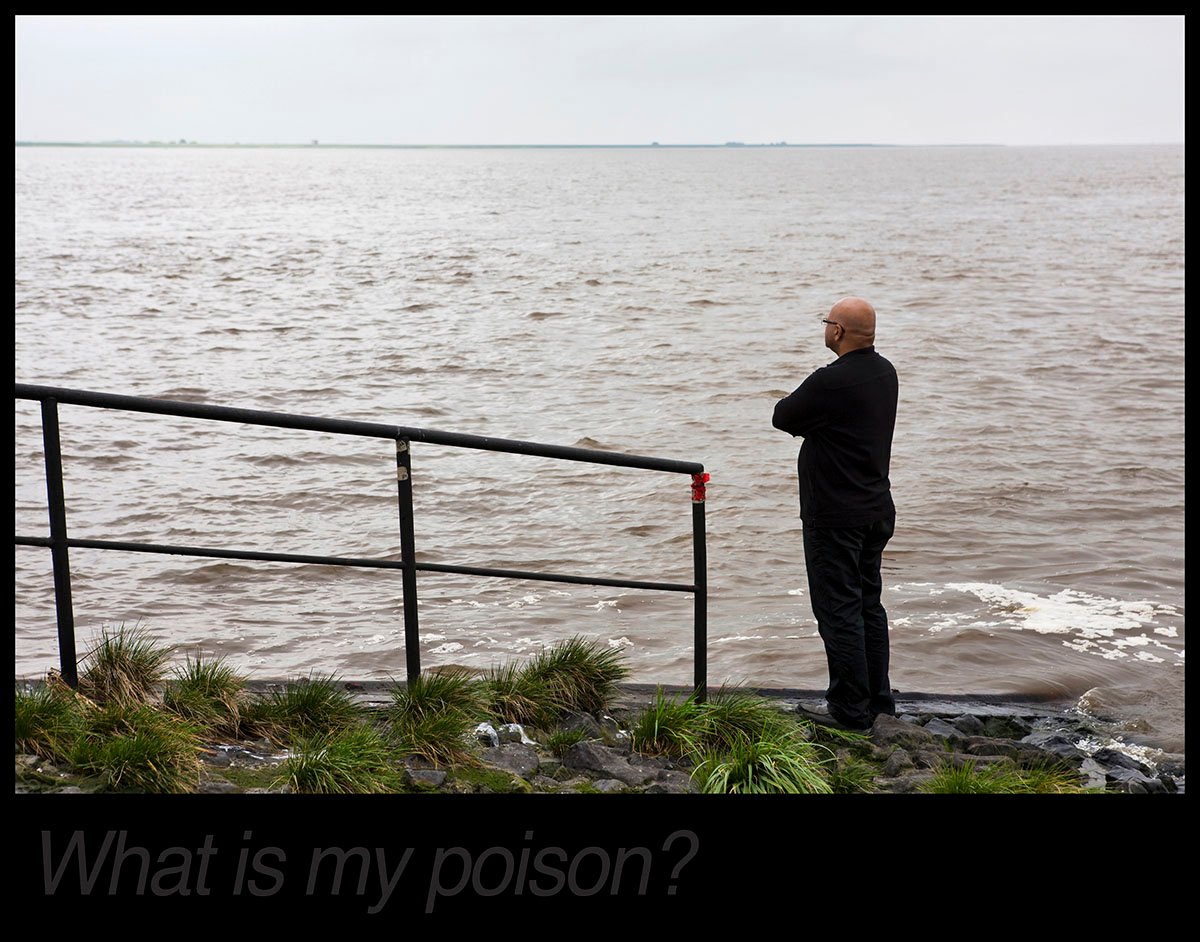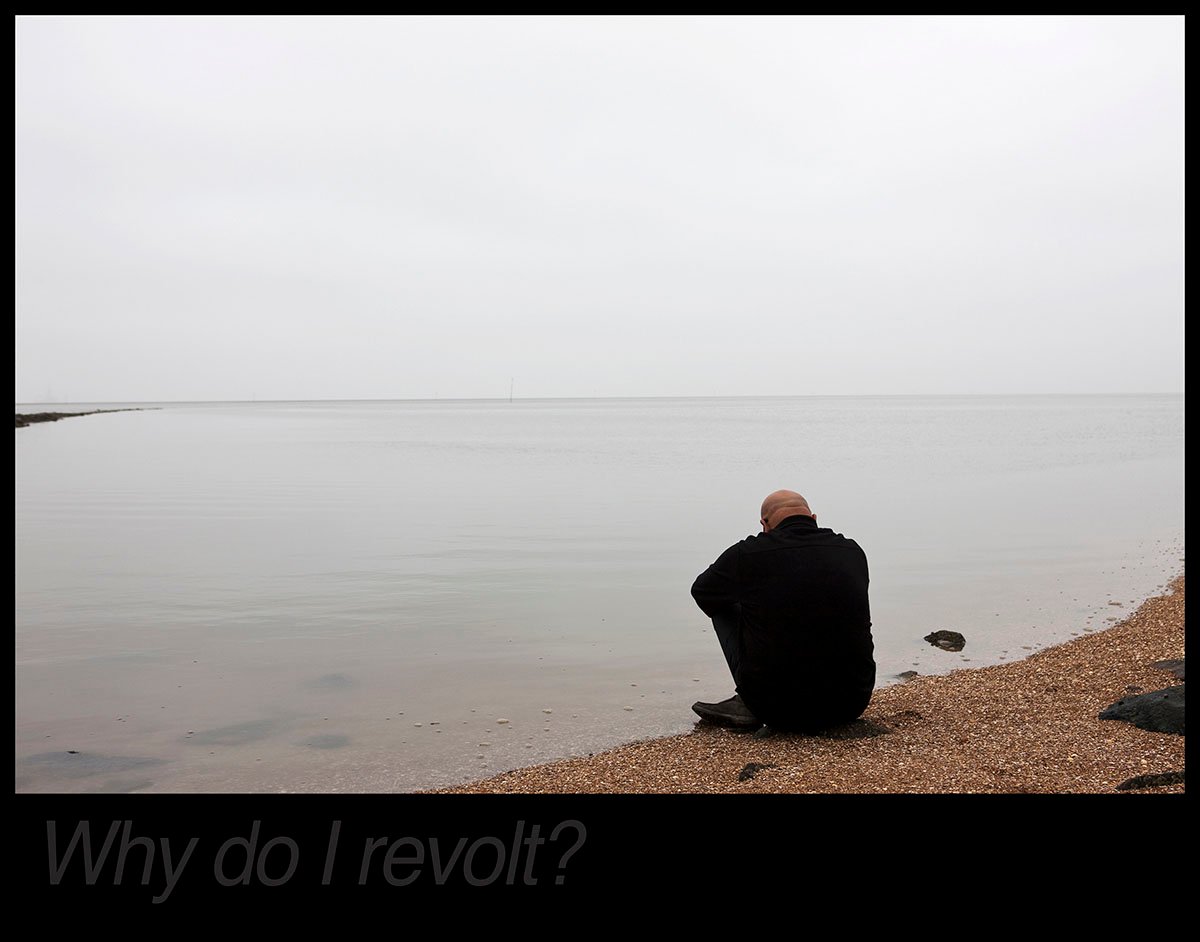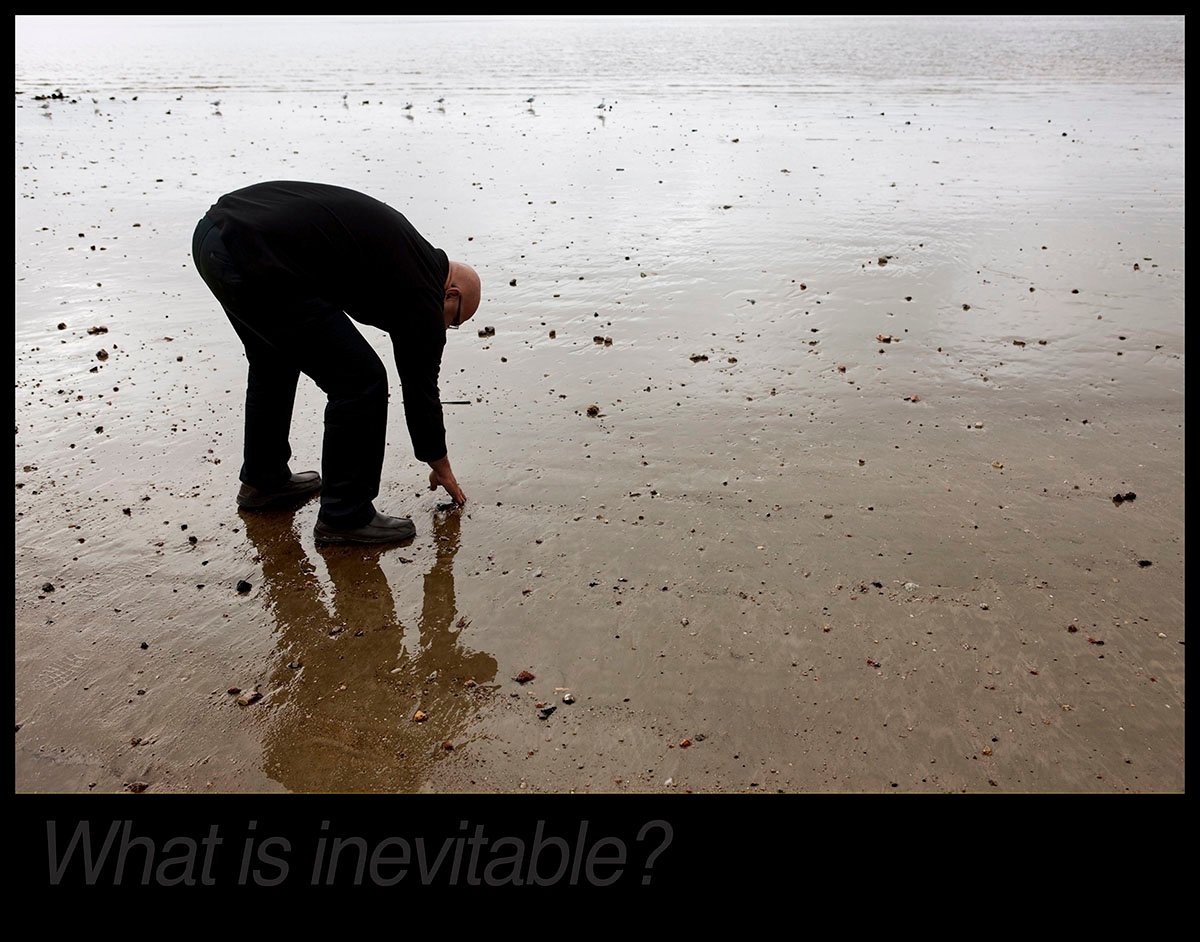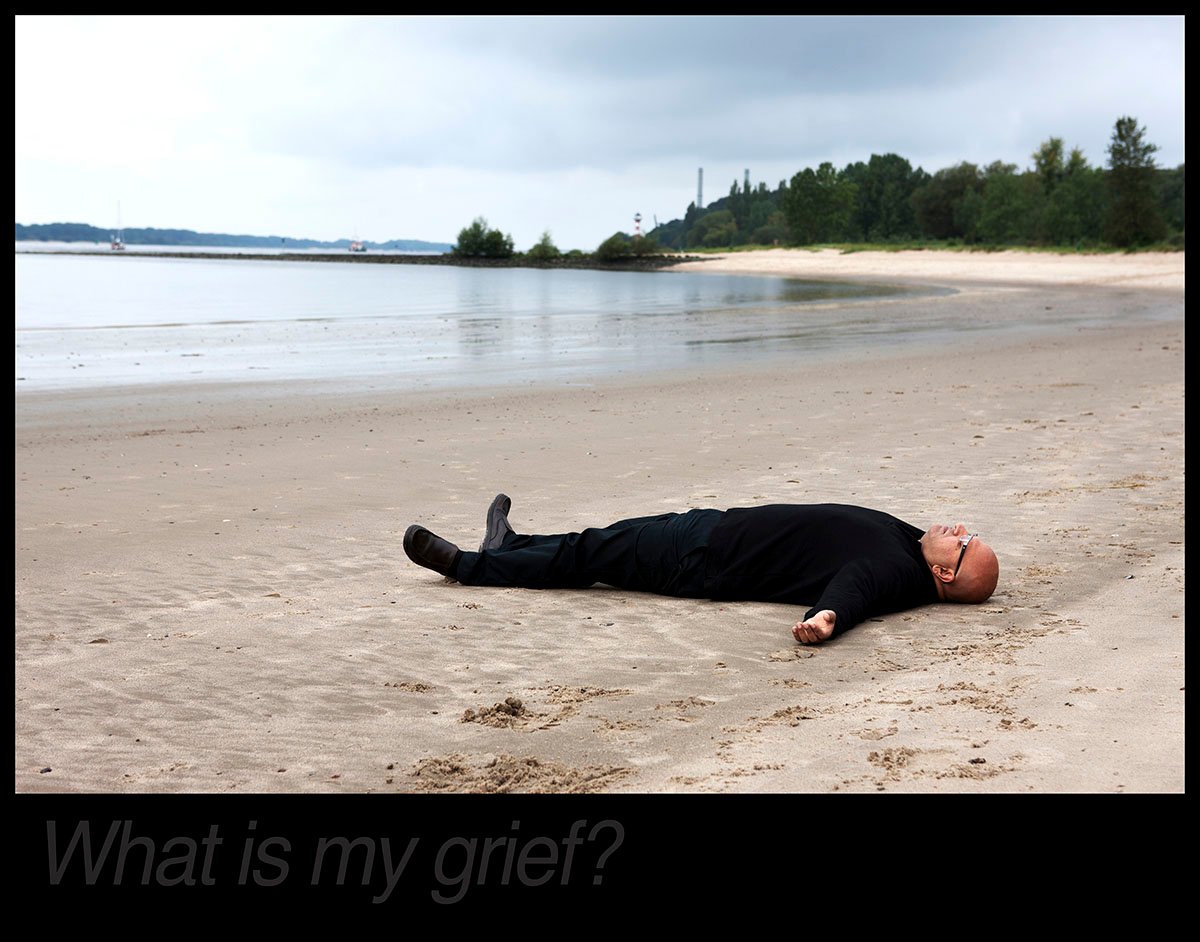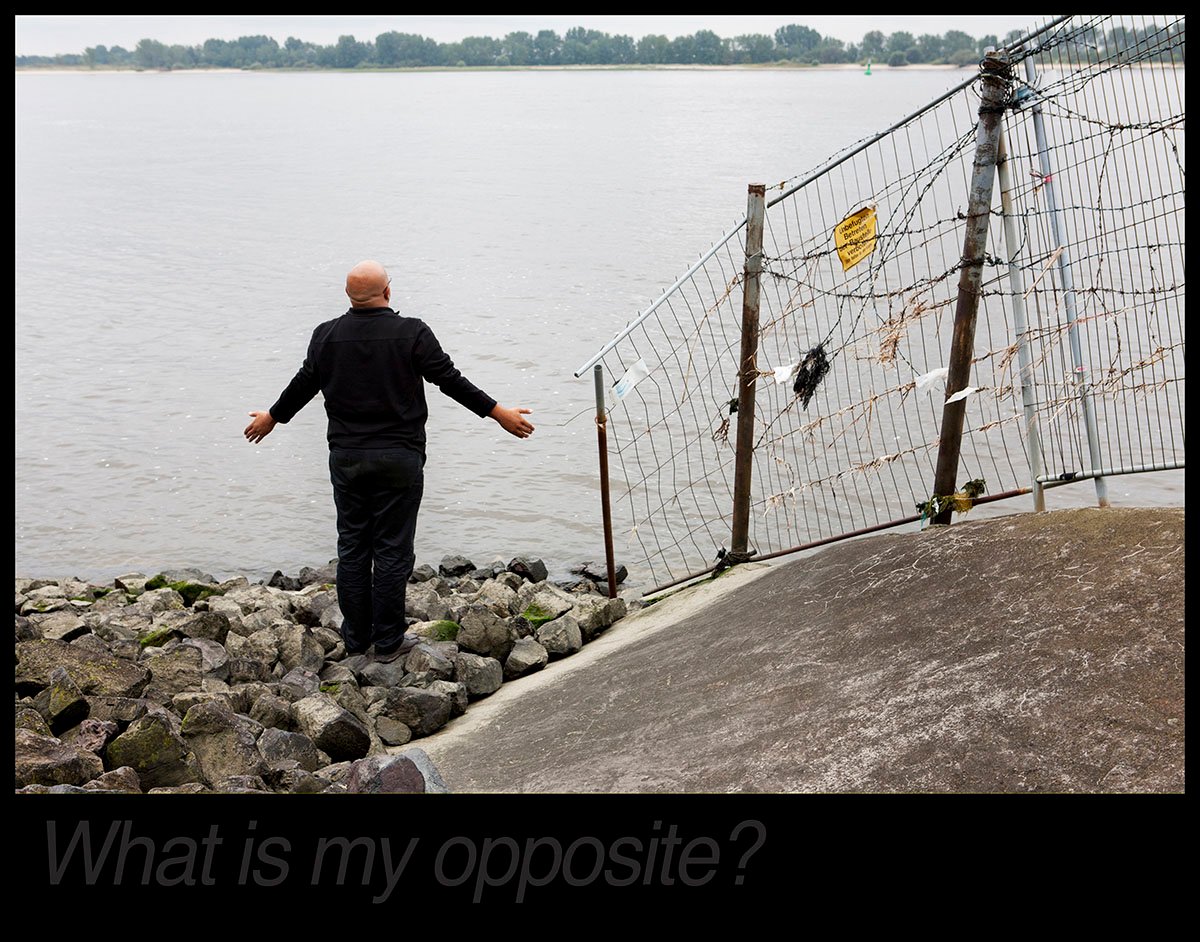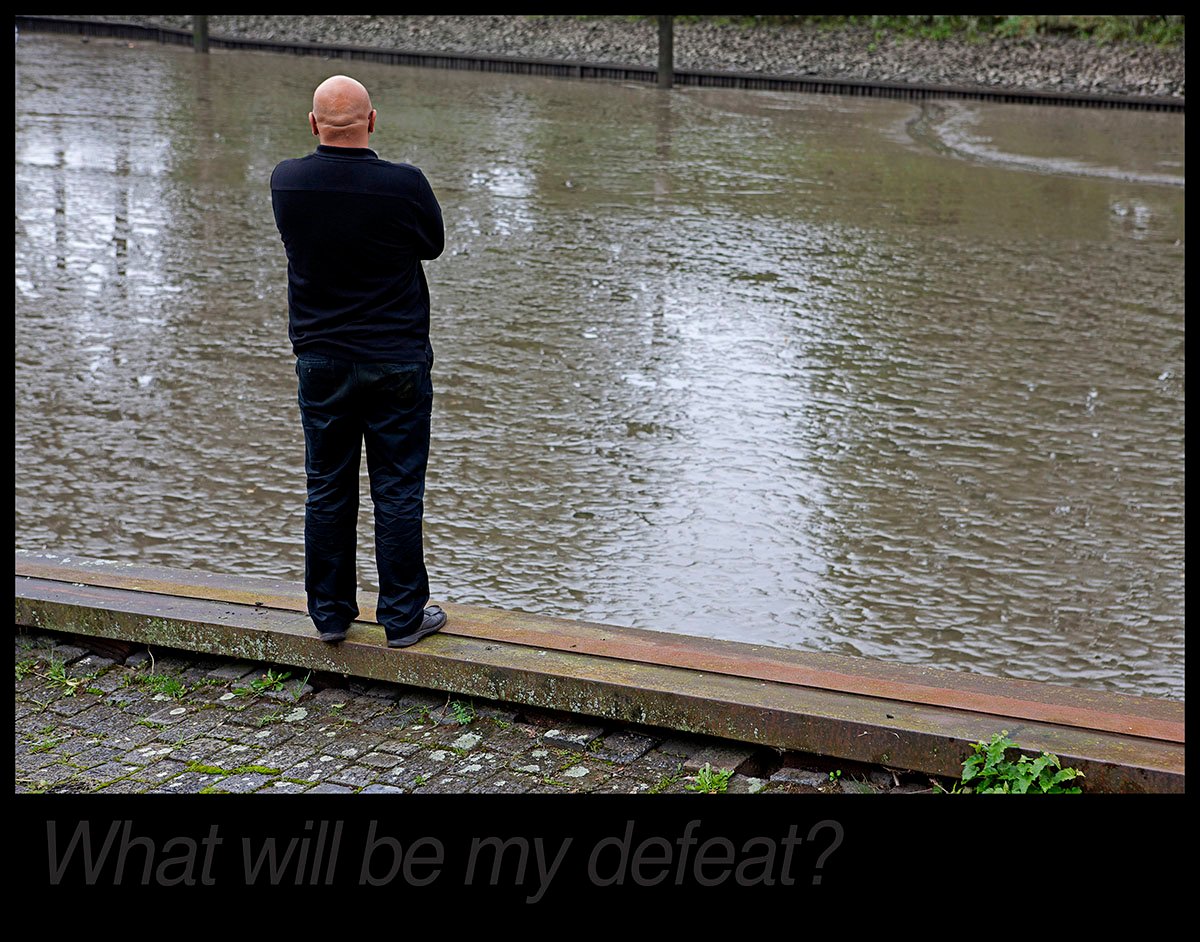What will be my defeat?
Nina Kalenbach
The twelve photographs of the series "What will be my defeat?", shows a black-clad figure at various sites where water is either visible or close at hand. The figure gestures at the water in many of the shots. Each photo is accompanied by a question. One, with the question "What is my space?," seems to target the basic presuppositions of a person exploring their own subjective needs and conditionalities ("What is my .?"). Other questions, beginning "What is .?," are of wider scope and inquire into some objective magnitude, e.g. "What is inevitable?" Who is asking the questions is a mystery. Whether the figure in black is interrogating the various places, or himself or the viewer, or whether the various places are interrogating the figure or us, the pictures don't say. Maybe the questioner is an outsider, the author of the works or their commissioner? Or are the questions and various views only arbitrarily connected? The figure's postures and gestures seem to annotate the scene in each picture, however, and to support the hunch that figure, river, and questions bear a relation to each other.
The series opens up a little when one learns that it is the River Elbe asking the questions. All the pictures were taken on the banks of the Elbe. The figure in black, the artist Atul Bhalla, based in Delhi, is the author of the series.1. Tracing the course of the river from Hamburg to its estuary on the North Sea, he harkened to the questions the river posed. The Hamburg photographer Helge Mundt accompanied him, and the result was this photo performance. Atul Bhalla borrowed the idea of overhearing a river's questions from the ancient Indian epic, the Mahabharata. An episode in that epic involves the wanderings of five princes in exile who arrive, one after another, at a lake only to have a fateful experience. Thirsty, each wants to drink of the lake, but before they can quench their thirst a spirit voice, with the Hindi name of Yaksha, demands that they answer a few questions first. The four younger princes ignore the voice, drink, and die. The eldest, Yudhistra, arrives last at the lake to find his brothers dead on the shore, and submits to the interrogating power. The heir to the throne's responses to the enigmatic questions proves his virtuous character. Hence, the future ruler may not only drink of the lake unharmed but his wise replies return his four brothers to life as well.
For Atul Bhalla the voice of the invisible spirit and its questions becomes the central element of his Elbe exploration. His identification of the voice with the river leans on Peter Brook's English translation of Jean-Claude Carrière's French stage script, Le Mahabharata (premiere 1985). In Brook's version, "a voice from the lake"-later in the story it turns out to be Dharma-puts the questions. In addition, Atul Bhalla takes his twelve questions from the script; turning them into questions the Elbe asks both him and us. As he says, though, in his synopsis of "What will be my defeat", he doesn't just borrow the questions but reformulates them "for our times (!) of our attempts to control the river."2 By attending to the river and keeping his mind open to the possible concerns and questions a body of water might have, Bhalla in his performance along the riverbanks creates an atmosphere that invites the Elbe to ask: "What is my space?" / "What can cover the earth?" / "What is my grief?" / What will be my defeat?"
The questions and photographs conjure up associations and one automatically wonders how text and picture are related. Sometimes the questions and the black-clad figure's gestures would seem to illustrate each other, as for example in "What is my space?" where the artist stands on the river bank, hand and arm raised, as if measuring out space. The gesture might be a response to the question "How much space does the Elbe still have?" or "How much space does the river need?" Sometimes the question seems to relate not so much to the artist's posture as to the geographical motif, the picture and question "What is inevitable?" for example. Here we see the artist stooping to touch an exposed mudflat, which, as the question suggests, is subject to the inevitable and natural tidal phenomena of ebb and flood. Atul Bhalla's pictures offer such possible readings, but the artist does not insist on them. Instead, the pictures tend to have a playful character that provokes attention and thought. In the photograph and question "What is my thought?" there is no water at all. Only those familiar with Hamburg can know that this view with the remains of the church of St. Nikolai in the background relates to the Elbe. The picture was taken where the river system has been significantly altered, the artist having chosen an altogether singular location to lie down at: a bridge over the Nikolaifleet. Of Hamburg's multitudinous canals, the Nikolaifleet is alone in not being separated from the tidal Elbe by locks. Here, at ebb tide each day, the waterway empties out. The topics of river management, the economic efficiency of the Elbe as a transport route, and care for the biodiversity of the environment can all be considered as central concerns of Atul Bhalla's series.
The artist himself is seen acting variously in each of the twelve pictures. He stands on the bank, gazing out, or lies on the sand as if trying to feel his way into the site with as much of his body as possible. Or he invests sites with pathos by lying down where people don't usually lie down. Staged as a silhouette figure, often in rear view as may be found in Romantic landscape paintings, the artist's body becomes a rhetorical device to lead the viewer's gaze into the picture and offer a point of identification. The viewer steps into the artist's shoes and, like Atul Bhalla performing along the banks of the Elbe, eavesdrops on and listens to the river. Many of the pictures have a very atmospheric feel. Not just the artist's corporeal visual rhetoric, but also the thinker-at-river role evoked by the poses, the colors, and the position of the horizon gesture at the pictorial design and themes of early nineteenth-century Western Romantic landscape painting.
Atul Bhalla gives his version of the motif of pondering and thinking in nature. But he also fractures the mood of profundity and melancholy contemplation that the pictorial composition transports. By exaggerating the mis en scène-the near-uniform color scheme, for instance, or the recurrent viewing instruction emanating from the rear-view figure-the artist develops an ironical form. The photo/question pair "Why do I revolt?" is almost a persiflage: the figure is sitting on the river bank, back to camera, before him the wide expanse of the Elbe estuary. The horizon bisects the image; the colors of the North Sea and the sky flow into each other. The riverbank is depicted only insofar as it is necessary to mark the edge of the picture and give the human protagonist a resting place. The crystal clear water of the North Sea in this picture and its unruffled surface are special, since it is unusually calm for open sea under tidal influence. It seems absurd to ask why rivers or people revolt here-the picture involves no physical activity, and were a river to rise up against human (over-) use then it might at least, corny as it may be, rise in level or overflow its banks.
The impact of the Elbe's questions and their possible answers remain open even upon a more sustained consideration. The pictures give no response to whether the questions can or should be seen as an apotropaic test to promote prudential action as in the case of Yudhistra. When Atul Bhalla's art work was shown at Hamburg Harbor City, the series was presented against the real backdrop of the River Elbe. Sections and details of the many-sided Elbe riverscape, which may have seemed strange at the exhibition venue, as well as aspects of man's use of the river, and the questions accompanying the pictures, were thus introduced into the HarborCity environment where an entire urban quarter is currently in process of being cemented into the river bed. Seen in this light, Atul Bhalla's picture series can also be read as a commentary on Hamburg's urban development politics. In addition to Atul Bhalla's interest in the topics of river control and management, man's exploration and questioning of his environment are central themes of What will be my defeat?
NOTES
1 In 2011 Atul Bhalla accepted the invitation to come to Hamburg and realize a work for the Hamburg side of the art project Yamuna-Elbe dealing with how the rivers Elbe in Hamburg and Yamuna in Delhi are used and perceived. His series of pictures was produced during his artistic examination of the Elbe and in fall 2011 was exhibited in Hamburg HarborCity, a new city quarter only a few years old
2 See http://www.yamuna-elbe.de/index.php?title=Bhalla_What_will_be_my_defeat
